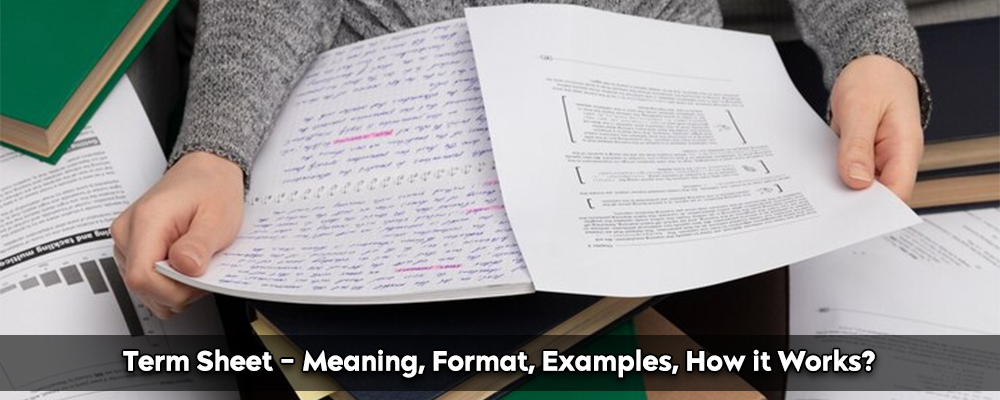Term sheets are used by investors across a wide range of industries to specify the terms and conditions of a deal before they are enforceable. Before each party finalizes the agreement, these pages assist all parties in understanding the terms of the agreement. You may produce a term sheet for the following investment or transaction by understanding term sheets, their significance, their formatting and how they work.
Term Sheet: About
A term sheet is an unenforceable contract that outlines the essential terms and conditions of a proposed investment. A term sheet is a kind of document that forms the basis of more intricate, legally enforceable agreements. In the event that the parties cannot reach a consensus over the terms outlined in the term sheet, an official contract or agreement that satisfies the term sheet’s requirements is created.
The term sheet essentially establishes a structure for guaranteeing that all parties to a business transaction agree upon all essential terms. The term sheet lessens the possibility of miscommunication or unwanted conflict.
Need A Legal Advice
The internet is not a lawyer and neither are you. Talk to a real lawyer about your legal issue

Term Sheet: Format
- The parties who participated are listed by name in the section of business information. Both the business that’s looking for funding and the potential investor should be named.
- The kind of security being issued and its price per share are specified in this particular section. There are several different kinds of assets available, such as preference shares, warrants, and equity. The initial term of the contract is decided upon by the target company and the private equity provider.
- The target business’s price per share is mentioned in this section of the valuation. Investors choose preferred shares over equity because they offer better terms. Lastly, the section offers details on the company’s pre- and post-money valuations. The number of shares in circulation prior to the completion of financing forms the basis of the pre-money valuation.
- The amount invested should be included in the document. The amount that is verbally mentioned is typically heavily bargained. The parties may become unclear about the precise amount anticipated as an investment. To prevent future misunderstandings, it is imperative to be specific about the quantity.
- Details of the liquidation are provided in the section on liquidation preference. The preference for liquidation is based on the amount invested. As a result, it could be the same as or higher than the amount invested. This multiple may be three or five times the capital that was contributed.
- It is the section of percentage of the stake of the template term sheet that specifies the ownership that investors receive as compensation for their investment.
- Investors have the chance to exercise their rights to vote in the business based on the portion of their investment that they make. Investors can learn how much influence they have over the company’s decision-making process from this particular section. Once they have a voice in the business, investors are more inclined to choose to support that specific company in its quest for funding.
Term Sheet: Example
- A $500,000 investment for a 20% ownership stake, accompanied by a two-year vesting term for founders, could be included in a startup financing term sheet. It describes anti-dilution protection, monthly updates, and board seats. The due diligence phase is one month, and the closing date is anticipated in forty-five days. The term sheet is subject to legal scrutiny and is not legally binding.
Term Sheet: How Does it Work?
- An initial agreement defining important terms in different commercial transactions is called a term sheet.
- It outlines important information like ownership of stock, governance, as well as due diligence timelines in addition to the investment amount.
- Non-Binding: Generally speaking, it is non-binding, which means it only acts as a guide and does not legally compel the parties to do anything.
- It allows for time and money while defending each party’s interests.
- Before a legally binding contract is negotiated, legal professionals usually check the term sheet for clarity and alignment.
- After reaching a consensus, the parties work to formalize the agreement using the term sheet.
Just as founders dislike harsh or greedy investors, investors are reluctant to endure the hassle or invest in founders who just want to take the money and run. Therefore, it is important to write the term sheet in a way that benefits both sides. In contrast, a poor term sheet creates obstacles for investors and founders and sets them against one another. A successful term sheet integrates the interests of investors and founders in a way that ultimately benefits all parties.
One can talk to lawyers from Lead India for any kind of legal support. In India, free legal advice online can be obtained at Lead India. Along with receiving free legal advice online, one can also ask questions to the experts online free through Lead India.




